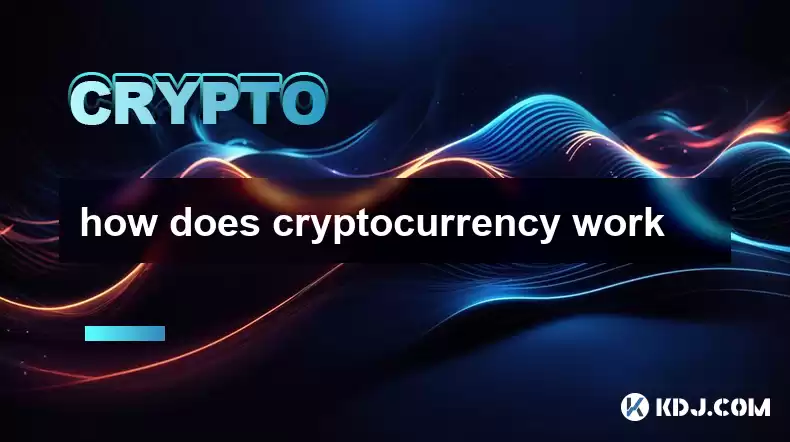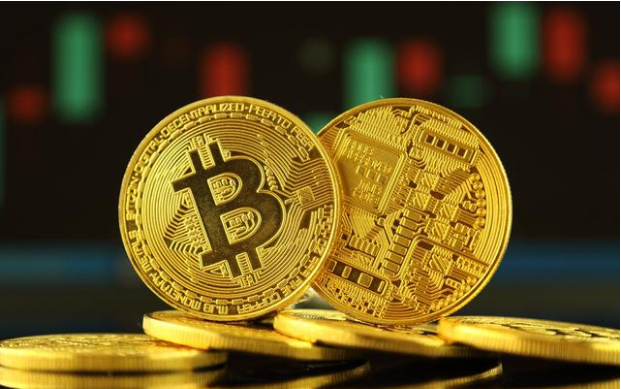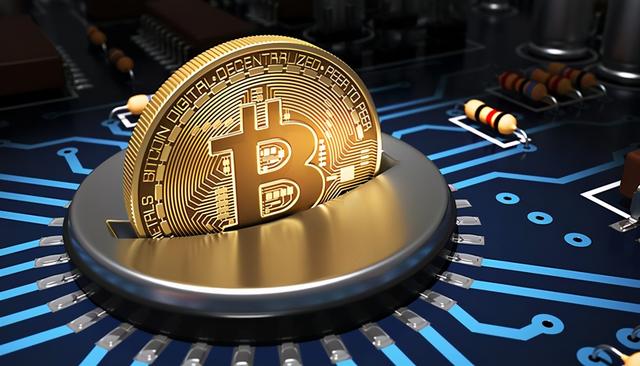-
 Bitcoin
Bitcoin $115100
1.27% -
 Ethereum
Ethereum $3675
2.71% -
 XRP
XRP $2.995
1.45% -
 Tether USDt
Tether USDt $1.000
0.02% -
 BNB
BNB $769.8
2.64% -
 Solana
Solana $168.0
3.25% -
 USDC
USDC $0.9999
-0.01% -
 TRON
TRON $0.3371
1.48% -
 Dogecoin
Dogecoin $0.2051
3.36% -
 Cardano
Cardano $0.7394
2.30% -
 Hyperliquid
Hyperliquid $38.15
0.42% -
 Stellar
Stellar $0.3966
-0.36% -
 Sui
Sui $3.486
2.93% -
 Chainlink
Chainlink $16.72
2.52% -
 Bitcoin Cash
Bitcoin Cash $568.0
4.36% -
 Hedera
Hedera $0.2440
2.59% -
 Ethena USDe
Ethena USDe $1.001
0.04% -
 Avalanche
Avalanche $22.16
2.06% -
 Litecoin
Litecoin $119.1
-0.73% -
 UNUS SED LEO
UNUS SED LEO $8.991
0.04% -
 Toncoin
Toncoin $3.232
-0.39% -
 Shiba Inu
Shiba Inu $0.00001233
2.82% -
 Uniswap
Uniswap $9.717
2.53% -
 Polkadot
Polkadot $3.664
1.85% -
 Dai
Dai $1.000
0.01% -
 Monero
Monero $281.2
-3.89% -
 Bitget Token
Bitget Token $4.350
1.55% -
 Cronos
Cronos $0.1428
5.07% -
 Pepe
Pepe $0.00001050
3.68% -
 Aave
Aave $262.3
3.54%
how does cryptocurrency work
This tutorial explains how cryptocurrencies function, utilizing blockchain's decentralized ledger and consensus mechanisms like Proof-of-Work to secure transactions and manage digital currency creation, differing significantly from traditional banking systems.
Mar 20, 2025 at 02:06 pm

The basic concept of cryptocurrency
Cryptocurrencies are trading media created by using cryptography principles to ensure transaction security and control transaction units. They belong to the category of digital currency or virtual currency. Bitcoin, born in 2009, is the first decentralized cryptocurrency. Since then, many similar cryptocurrencies (commonly called "altcoins") have emerged one after another. The cryptocurrency system needs to meet a series of conditions: no central organization is required, and the state is maintained through a distributed consensus mechanism; the ability to record cryptocurrencies and their ownership; the way new currency is generated and the owner determines; ownership is proved only through cryptography; transactions are allowed to change ownership, and at most one change instruction for ownership of the same cryptocurrency at the same time shall be executed.

How cryptocurrencies work
Distributed ledger and blockchain : Cryptocurrencies rely on distributed ledger technology, where blockchain is the core. Blockchain is composed of many "blocks" connected in chronological order. Each block contains a certain number of transaction records, as well as the hash value of the previous block (a unique digital fingerprint generated by a specific algorithm) to form a chain structure. This structure makes it extremely difficult to tamper with the information of any block, because this will cause changes in the hash value of all subsequent blocks, thus ensuring the immutability and security of transaction records.
Consensus mechanism : In a decentralized network, a consensus mechanism is needed to ensure that all nodes agree on transaction records. Taking the Proof of Work (PoW) adopted by Bitcoin as an example, nodes (miners) in the network need to compete for accounting rights by solving complex mathematical problems. The first miner to solve the problem will receive newly generated bitcoins as a reward and broadcast its packaged blocks to the entire network. After other nodes verify that the block information is correct, they will add it to their own blockchain. This mechanism ensures that the network can operate in an orderly manner without a central organization, preventing problems such as double payments.
Encryption technology ensures security : Cryptocurrencies use asymmetric encryption technology, and each user has a pair of public and private keys. The public key is equivalent to the user's account address and can be shared publicly to receive cryptocurrencies; the private key is properly kept by the user, like an account password, used to sign the transaction and prove the authenticity and ownership of the transaction. When transaction information is spreading on the network, it is encrypted through a hash algorithm to ensure the integrity and confidentiality of the information.
Types of cryptocurrencies

Blockchain native tokens : such as Bitcoin (BTC), are often used as a store of value and a means of hedging inflation; Ethereum (ETH), is the native token of the Ethereum blockchain, used to pay transaction fees, execute smart contracts, etc.
Stablecoins : Designed to keep prices stable, usually pegged to stable assets or currencies (such as US dollars, euros). Including pegged stablecoins (such as USDT, USDC), algorithmic stablecoins and asset stablecoins (such as PAX Guld, Digix Guld Token).
Platform coins : issued by specific cryptocurrency exchanges, with special functions and uses such as trading discounts, participation in platform activities, and voting, such as BNB (Binance Coin), HT (Huobi), OKB (OKCoin Coin), etc.
Disclaimer:info@kdj.com
The information provided is not trading advice. kdj.com does not assume any responsibility for any investments made based on the information provided in this article. Cryptocurrencies are highly volatile and it is highly recommended that you invest with caution after thorough research!
If you believe that the content used on this website infringes your copyright, please contact us immediately (info@kdj.com) and we will delete it promptly.
- BlockDAG, Litecoin, and Cardano: Charting the Course in Crypto's Dynamic Waters
- 2025-08-07 09:09:06
- Fireverse Token: Igniting a Musical Revolution in Web3
- 2025-08-07 08:27:45
- Ethereum, L2 Withdrawals, and Decentralization: A New Yorker's Take
- 2025-08-07 08:32:33
- Avalanche vs. Ruvi AI: Daily Sales Tell a Story of Crypto Disruption
- 2025-08-07 06:29:35
- DeSoc: The Crypto to Buy Now for a Decentralized Future (and Maybe 43x Gains!)
- 2025-08-07 06:50:16
- Arctic Pablo Coin: Riding the Meme Coin Wave with a Deflationary Twist
- 2025-08-07 07:18:13
Related knowledge

What is Chainlink (LINK)?
Jul 22,2025 at 02:14am
Understanding Chainlink (LINK): The Decentralized Oracle NetworkChainlink is a decentralized oracle network designed to bridge the gap between blockch...

What is Avalanche (AVAX)?
Jul 22,2025 at 08:35am
What is Avalanche (AVAX)?Avalanche (AVAX) is a decentralized, open-source blockchain platform designed to support high-performance decentralized appli...

What is Polkadot (DOT)?
Jul 19,2025 at 06:35pm
Understanding the Basics of Polkadot (DOT)Polkadot (DOT) is a multi-chain network protocol designed to enable different blockchains to transfer messag...

What is Litecoin (LTC)?
Jul 23,2025 at 11:35am
Overview of Litecoin (LTC)Litecoin (LTC) is a peer-to-peer cryptocurrency that was created in 2011 by Charlie Lee, a former Google engineer. It is oft...

What is Monero (XMR)?
Jul 21,2025 at 10:07am
What is Monero (XMR)?Monero (XMR) is a decentralized cryptocurrency designed to provide enhanced privacy and anonymity for its users. Unlike Bitcoin a...

How to add indicators to Ethereum chart on TradingView?
Jul 19,2025 at 07:15am
What Is an Ethereum Chart on TradingView?The Ethereum chart on TradingView is a visual representation of the price movement of Ethereum (ETH) over a s...

What is Chainlink (LINK)?
Jul 22,2025 at 02:14am
Understanding Chainlink (LINK): The Decentralized Oracle NetworkChainlink is a decentralized oracle network designed to bridge the gap between blockch...

What is Avalanche (AVAX)?
Jul 22,2025 at 08:35am
What is Avalanche (AVAX)?Avalanche (AVAX) is a decentralized, open-source blockchain platform designed to support high-performance decentralized appli...

What is Polkadot (DOT)?
Jul 19,2025 at 06:35pm
Understanding the Basics of Polkadot (DOT)Polkadot (DOT) is a multi-chain network protocol designed to enable different blockchains to transfer messag...

What is Litecoin (LTC)?
Jul 23,2025 at 11:35am
Overview of Litecoin (LTC)Litecoin (LTC) is a peer-to-peer cryptocurrency that was created in 2011 by Charlie Lee, a former Google engineer. It is oft...

What is Monero (XMR)?
Jul 21,2025 at 10:07am
What is Monero (XMR)?Monero (XMR) is a decentralized cryptocurrency designed to provide enhanced privacy and anonymity for its users. Unlike Bitcoin a...

How to add indicators to Ethereum chart on TradingView?
Jul 19,2025 at 07:15am
What Is an Ethereum Chart on TradingView?The Ethereum chart on TradingView is a visual representation of the price movement of Ethereum (ETH) over a s...
See all articles

























































































